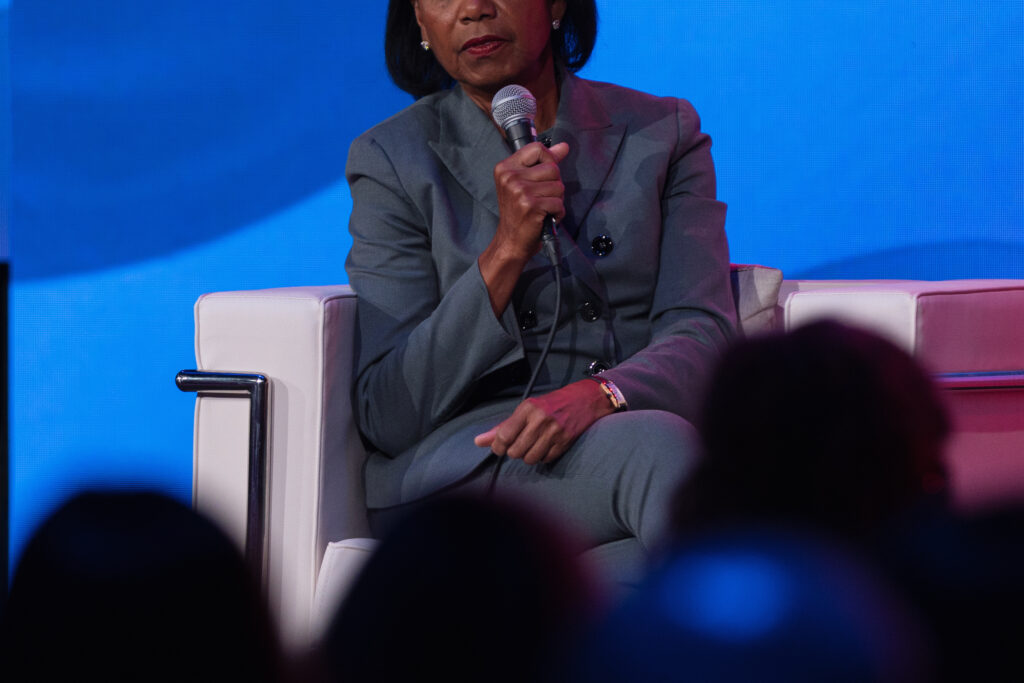If you’re coordinating an event that will include a panel discussion or presentation, you’ll have plenty of logistical decisions to make. One decision that doesn’t have to be complicated is what kind of microphones to provide for your panelists. There are a few choices that offer different advantages, and picking the right microphone is an important consideration – something you do not want to get wrong on your biggest day of the year.
Which Microphones Match the Needs of Your Event?

In terms of pure sound quality, it’s hard to beat headset mics. Coming in a close second are lavalier mics or lav mics for short. Both of these options involve small personal microphones that attach to a headpiece or clip onto the lapel. Both have wireless transmitter battery packs, sometimes called body packs or belt packs, that will discreetly attach to the user’s clothes or get tucked in a pocket. This option has a few benefits beyond the superior sound. If the main function of the panel is to speak conversationally with each other, these mics allow for that to transpire in a very natural way. The aesthetic of these microphones feels very clean and elevated. If the panelists are likely to have notes in front of them, headsets or lav mics keep their hands free and available to access them.

Microphones Best for Panelist Simplicity
Although headsets and lavalier microphones may seem at first like the obvious choice, there are some drawbacks that should be considered. For example, the process of getting the panelists mic-ed can be time-consuming, and it requires them to be backstage immediately before their participation. If you are switching from one set of panelists to another and plan to reuse the mics, there will be downtime while the switches are made. Headsets and lavs are the most expensive mic-ing options, and while quality is always worth an investment, you may be able to achieve all your goals for a professional AV production with another choice.
The Microphone For Last-Minute Presenter Arrivals

The other main microphone option is the use of handhelds. These might feel like the less exciting way to go, but handhelds offer a wide variety of benefits that end up making them the mics our clients usually choose for their panel needs. The sound quality from handheld microphones is more than adequate for most panel needs. The microphones can be placed at each seat, allowing for the panelists to arrive on stage with no prep time needed.
The use of the handhelds allows a visual cue for attendees at the back of a large audience to be able to easily tell who’s speaking, and because using a handheld microphone is an intentional physical movement, there’s usually better flow from one panelist to the next with fewer accidental interruptions. If someone needs to cough, take a drink, or ask a quiet question to the person next to them, there’s no way around attracting attention if they’re wearing their microphone. With a handheld, though, they are only amplified when they want to be, giving your panelists a comforting sense of control.
Handheld mics are also valuable due to their versatility of use. After your panel, handhelds can move to the audience for Q and A sessions or to the front of the stage for presenters or hosts.
A Microphone Choice That Saves Money

People often assume that wireless microphones are the only type to consider, but we often recommend wired mics. For seated panels, wired mics can be waiting for them in their chairs. We can position the wires to be minimally visible and unobtrusive, making them essentially the same visually as wireless mics. This is worth considering for affordability and risk of interference. Although every company and service is different, it’s typically true that wireless microphones will cost around 12x more than wired ones ($120/$10 is an average price difference, though in-house hotel/venue AV companies will often charge up to $90 each for wired mics). So for half the cost of one wireless mic, you can pay for your entire 6-person panel to have wired mics, which then frees up more of your budget for other priorities.

How to Choose the Right Microphone For Your Event
If handheld mics seem to be the right fit for an event, we always encourage planners to ensure that each panelist gets their own microphone. While passing mics certainly can work if necessary, it creates logistical challenges for your panelists that are limited with personal mics. Sharing mics creates pockets of dead time and awkward transitions as panelists figure out who wants or needs to speak next and how to get the closest microphone in their hands. Especially if you are using wired handheld mics, the cost of mic-ing each panelist is well worth the benefit of a smooth panel delivery.

Organizing a panel means creating a valuable event for your audience and a comfortable experience for your panelists. Choosing the right microphones to connect the panelists with your audience in a way that is efficient, seamless, and of high quality will put you exactly where you need to be to produce a successful event.

